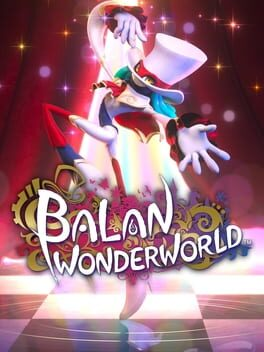Trivia Browser
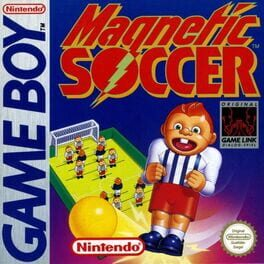
▲
1
▼
During the September 2020 Game Boy lot check leak, it was discovered that Magnetic Soccer was at one point planned to have a Japanese release under the name "Kick Attack!!". As part of this, alternate versions of the game's title and sound test screens were found: along with the logo and copyright changes, the colors of the player's skin and outfit were swapped (a change that applies to both screens), the ball uses different shading, and the player shouts "Fight!!" and "Go! Go!" in text form, something that does not happen in the European version.

subdirectory_arrow_right Pokémon White Version (Game)
▲
1
▼
Skyla was originally conceived as a Dragon-type gym leader, while Iris was conceived as a Flying-type one. These attributes were swapped relatively early into development: examining character pitches for both gym leaders found in the Teraleak (a large-scale breach of internal server data from Game Freak in 2024), the earliest recovered revisions are the only ones which describe them with their initial type specializations. From the second revision of the documents onward, they bear the same types seen in the final game.
Of note is that Iris' later pitches describe her Dragon-type specialization as stemming from a connection that she felt since birth. Given that these subsequent drafts change her ethnicity from "indigenous" (likely Mesoamerican given her use of "Aztec-style" hair decorations) to "Middle Eastern," these traits imply that she is intended to be multiethnic (as within Middle Eastern cultures, dragons are found in Canaanite, Mesopotamian, and Persian mythology, while her outfit, a galabeya, is generally associated with rural Egyptians).
Of note is that Iris' later pitches describe her Dragon-type specialization as stemming from a connection that she felt since birth. Given that these subsequent drafts change her ethnicity from "indigenous" (likely Mesoamerican given her use of "Aztec-style" hair decorations) to "Middle Eastern," these traits imply that she is intended to be multiethnic (as within Middle Eastern cultures, dragons are found in Canaanite, Mesopotamian, and Persian mythology, while her outfit, a galabeya, is generally associated with rural Egyptians).
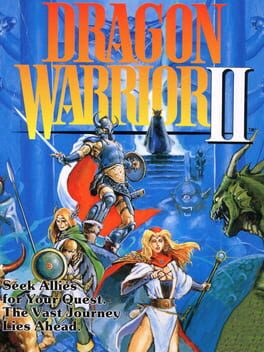
▲
1
▼
 In an interview with the game's designer and writer Yuji Horii published in the 1987 GSLA, he discussed the memory limitations that his team faced during the development of the Famicom version of Dragon Quest II, leading them to remove some elements from the final game, including:
In an interview with the game's designer and writer Yuji Horii published in the 1987 GSLA, he discussed the memory limitations that his team faced during the development of the Famicom version of Dragon Quest II, leading them to remove some elements from the final game, including:• Large, kamishibai-esque pictures meant for cutscenes. Horii noted that one of these images was quietly preserved in the story section of the Dragon Quest II instruction manual, appearing in black and white instead of color.
• An expanded scenario involving a full-size image of Rhone’s landscape, visible from the top of a lighthouse. This image would have featured a single sparkling point of light in the sea, marking the location of the sunken treasure required to get the Echo Flute. However, due to memory constraints, the image had to be cut, and the scenario was subsequently changed.
• A more humorous idea they had to abandon was the "Abunai Mizugi" (Scandalous Swimsuit). This piece of armor, intended to be as strong as the Mink Coat and extremely expensive, would have caused the Princess of Moonbrooke's character sprite to change to reflect her wearing it. While it was cut from the Famicom version of the game, it was included as equippable armor for the Princess in the MSX version. It was slightly modified from the original idea, where every enemy has a 1/8th chance to be stunned by her beauty while she wears it.
Yuji Horii 1987 GSLA interview:
https://shmuplations.com/dragonquestii/
Dragon Quest II (MSX) - Abunai Mizigi:
http://www.youtube.com/watch?v=cjlSMGVEXJA
https://shmuplations.com/dragonquestii/
Dragon Quest II (MSX) - Abunai Mizigi:
http://www.youtube.com/watch?v=cjlSMGVEXJA
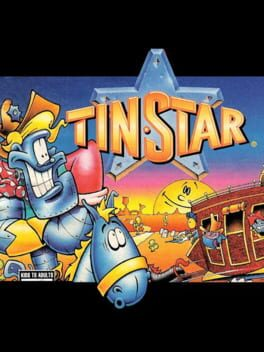
▲
1
▼
According to designer Ste Pickford, the reason Nintendo hired Software Creations to make Tin Star was as a form of compensation for not assigning them to do a follow-up to Ken Griffey Jr. Presents Major League Baseball despite them developing the original, with the sequel instead being developed by Rare as Ken Griffey Jr.'s Winning Run.
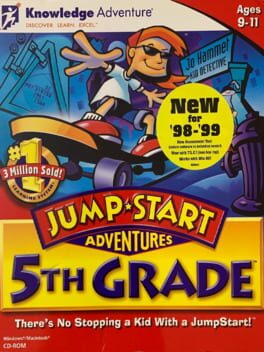
▲
1
▼
There are three unused graphics in the game: a simplistic graphic listing off the game's three activities (with the unnamed crate-stacking activity referred to as "Hanoi Tower"), an alternate version of the dungeon's background with different lighting and design for the door, and the background for the credits screen from JumpStart Adventures 3rd Grade: Mystery Mountain, which was unused due to the credit sequence being stored on a video file and was likely just a placeholder until the new credits sequence was developed.

subdirectory_arrow_right Banjo-Kazooie (Game)
▲
1
▼
According to two interviews with Famitsu in 1998, Shigeru Miyamoto cited Rare's exceptional graphical and technical work on Banjo-Kazooie as a factor for why The Legend of Zelda: Ocarina of Time was delayed, as Miyamoto and his team felt they needed to compete with it. He thought a 3D action platformer of its kind running that well on Nintendo 64 hardware was "so amazing that we don't want to be outdone", and "if Mario's a makunouchi bento, Banjo's a deluxe makunouchi bento." Some reviews of Ocarina of Time at its release compared its graphics, frame rate and textures with Banjo-Kazooie's, and felt Ocarina of Time did not perform as well in that field.
Shigeru Miyamoto Famitsu interview - April 17, 1998:
https://web.archive.org/web/20090129154359/http://miyamotoshrine.com/theman/interviews/170498.shtml
Shigeru Miyamoto Famitsu interview - May 8, 1998:
https://x.com/m0m0_0ssrr_/status/1847144999642890416
https://x.com/gosokkyu/status/1847465155858477459
IGN 1998 review:
https://web.archive.org/web/20121009233109/http://www.ign.com/articles/1998/11/26/the-legend-of-zelda-ocarina-of-time-review
Electronic Gaming Monthly Issue #115 (February 1999) (Page 166 in the magazine):
https://archive.org/details/electronicgamingmonthlyissue115february1999/page/n179/mode/2up
https://web.archive.org/web/20090129154359/http://miyamotoshrine.com/theman/interviews/170498.shtml
Shigeru Miyamoto Famitsu interview - May 8, 1998:
https://x.com/m0m0_0ssrr_/status/1847144999642890416
https://x.com/gosokkyu/status/1847465155858477459
IGN 1998 review:
https://web.archive.org/web/20121009233109/http://www.ign.com/articles/1998/11/26/the-legend-of-zelda-ocarina-of-time-review
Electronic Gaming Monthly Issue #115 (February 1999) (Page 166 in the magazine):
https://archive.org/details/electronicgamingmonthlyissue115february1999/page/n179/mode/2up
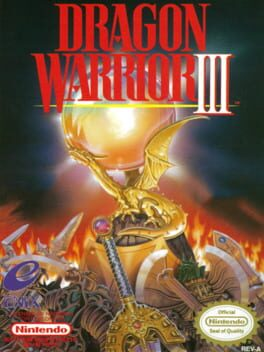
▲
1
▼
According to designer and writer Yuji Horii in a 1987 interview, Dragon Quest III first began development at a big company retreat in the town of Hakone in January of that year.

▲
1
▼
In a 1989 interview with designer and writer Yuji Horii and director Koichi Nakamura, they discussed their focus on enhancing the player’s experience in combat and storytelling. Nakamura explained that they wanted to make battles more enjoyable and less repetitive, moving away from the grind-heavy nature of older RPGs. He highlighted that the team worked to ensure each battle felt engaging, and tried to prevent the common tendency of players to run from strong enemies due to the monotony of repeated encounters.
They also discussed the expanded battle options in Dragon Quest III, including a greater variety of spells, the ability to attack party members, and character positioning in the lineup having an effect on battles. They emphasized that even support spells, which were often underutilized in previous games, had been made more "effective in their own right". They believed every spell in the game now served a meaningful purpose, adding depth to combat, and contributing to their goal of creating an experience where players would be curious and eager to experiment with different strategies.
They also discussed the expanded battle options in Dragon Quest III, including a greater variety of spells, the ability to attack party members, and character positioning in the lineup having an effect on battles. They emphasized that even support spells, which were often underutilized in previous games, had been made more "effective in their own right". They believed every spell in the game now served a meaningful purpose, adding depth to combat, and contributing to their goal of creating an experience where players would be curious and eager to experiment with different strategies.
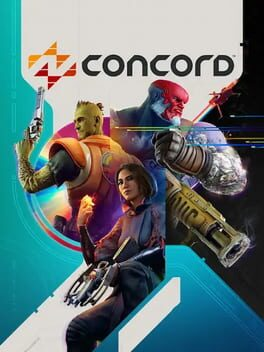
▲
2
▼
In August 2024, it was revealed that Concord would serve as the basis for an episode of "Secret Level", an animated video game anthology series released on Amazon Prime Video. However, the servers for Concord were shut down on September 6th, just two weeks after launch and much earlier than the show's planned release on December 10th. Despite this, it was confirmed the day before Concord was taken offline that the episode would remain in the show's lineup.
"Secret Level" announcement:
https://www.ign.com/articles/secret-level-every-video-game-gamescom-trailer-amazon
Episode remaining in the lineup:
https://www.ign.com/articles/concord-will-remain-in-prime-videos-secret-level-despite-games-sudden-cancellation-source
https://www.ign.com/articles/secret-level-every-video-game-gamescom-trailer-amazon
Episode remaining in the lineup:
https://www.ign.com/articles/concord-will-remain-in-prime-videos-secret-level-despite-games-sudden-cancellation-source

▲
1
▼
The game was directed by Eliot Nelson, a former reporter for the Huffington Post who began developing it in 2018 after leaving the company. Although based on his experiences as a journalist, Nelson also drew inspiration from various other video games, namely sports titles such as NBA 2K and Madden NFL as well as other simulation games like SimCity. One particular inspiration was The Oregon Trail, specifically in regards to its structure, with Nelson stating:
"It's that simple formula that we're trying to recreate with Political Arena, Oregon Trail never had any lessons in it. You never just stop and answer a quiz. It was a fun and immersive and - dare I even say? - addictive game that has did [sic] such a successful job of familiarizing tens of millions of people with its relatively arcade corner of American history."
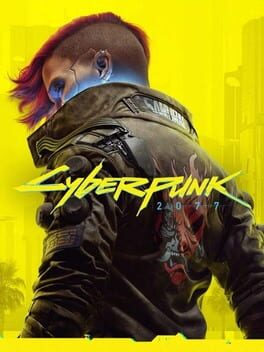
▲
1
▼
There are unused voice lines within the game's files for male V that pertain to the Judy romance, which are normally exclusive to female V. According to CD Projekt Red, this is because all of V's dialogue, regardless of whether it was intended for male or female V, was recorded by both voice actors to "avoid missing something by mistake that would require future recordings."
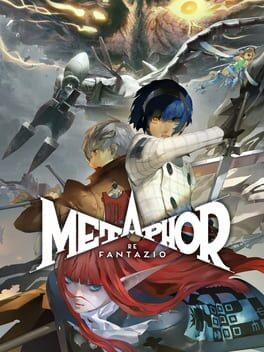
▲
1
▼
Unlike the Persona series, which was made by the same team as Metaphor: ReFantazio, the player is not given the ability to romance their party members. According to director Katsura Hashino, this is because the player character Will is more focused on his relationship with the people and trying to become king than starting a romantic relationship like the player characters in Persona games, and that they wanted to maintain a respective sense of realism between Metaphor and Persona's different settings:
"A lot of our games are based around the idea of teenagers living their lives. What teenager doesn't want to have romance in their life? It's part of the realism of the setting. We know people really like this system and it's really popular, but for [Metaphor] specifically, it's not about teenagers. It's about a person trying to become the ruler of the land."
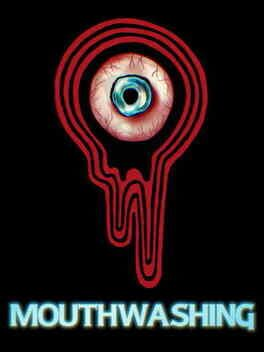
▲
1
▼
In a conversation with EIP Gaming writer Dylan Graves, producer Kai Moore cited horror films such as Alien, Event Horizon, Sunshine, The Thing, and Pandorum as influences on the game's bleak, paranoid tone and isolated setting. However, Moore also countered the association of these kinds of horror stories with monsters, stating that he sought to make the player question the definition of "monster," particularly in the context of Jimmy's statement at the start of the game claiming that Curly willingly crashed the Tulpar.
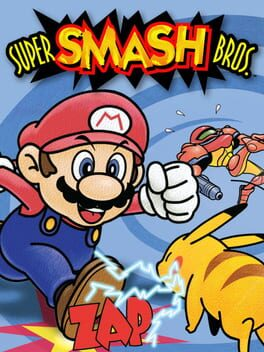
subdirectory_arrow_right Super Smash Bros. (Collection)
▲
4
▼
According to series creator Masahiro Sakurai in a 2024 video, ideas for the series' name were first brainstormed by team members at HAL Laboratory, while the "Bros." part of the name was picked out by its president Satoru Iwata during a meeting with him, Sakurai, and Ape Inc. founder Shigesato Itoi. Iwata's reasoning for adding Bros. to the title was that despite the game's roster not all being "brothers", he believed the word added the nuance that they were "friends who were settling a little disagreement" instead of just simply fighting.

subdirectory_arrow_right Pokémon White Version (Game)
▲
1
▼
 Among the files included in the Teraleak, a massive breach of internal server data from Game Freak in 2024, are early overworld sprites for various prominent NPCs in Pokémon Black and White. These sprites feature various differences compared to the final game:
Among the files included in the Teraleak, a massive breach of internal server data from Game Freak in 2024, are early overworld sprites for various prominent NPCs in Pokémon Black and White. These sprites feature various differences compared to the final game:• Grimsley is blonde instead of dark-haired, coincidentally resembling Barry from the Generation IV titles.
• Elesa doesn't wear stockings and features a more curved set of headphones.
• Brycen's palette is overall darker, he wears a face mask instead of a domino mask, and his robe shows much more skin compared to the final game.
• Skyla has much darker skin and brown hair tied in pigtails resembling a bird's wings. This design, which was radically overhauled in the final game, is likely a more literal interpretation of later revisions of her character pitch (also included in the Teraleak), which describe her as a dark-skinned Hispanic character inspired by Latina celebrities such as Jennifer Lopez (who is ethnically Puerto Rican) and Isabeli Fontana (who hails from Brazil, which is a Latin American country, but not a Hispanic one on account of its Lusophone population).
In-battle sprites for several characters are also present in the Teraleak's assets. Notably, while Elesa's in-battle sprite reflects her early overworld design, Skyla's in-battle sprite is light-skinned and blue-haired, indicating that Game Freak were considering alternate design options before ultimately settling with her final look, which features red hair, a significantly different hairstyle, and a complexion that matches the "slightly dark-toned" description given in the earliest version of her pitch (which more specifically describes her as South American, matching Fontana but not Lopez).
The Cutting Room Floor articles:
https://tcrf.net/Development:Pok%C3%A9mon_Black_and_White/Sprites/Overworld_Sprites
https://tcrf.net/Development:Pok%C3%A9mon_Black_and_White/Documents#Gym_Leader_Profiles
Tweet by Centro Leaks comparing Skyla's early overworld and battle sprites:
https://x.com/CentroLeaks/status/1845531330911822270
https://tcrf.net/Development:Pok%C3%A9mon_Black_and_White/Sprites/Overworld_Sprites
https://tcrf.net/Development:Pok%C3%A9mon_Black_and_White/Documents#Gym_Leader_Profiles
Tweet by Centro Leaks comparing Skyla's early overworld and battle sprites:
https://x.com/CentroLeaks/status/1845531330911822270
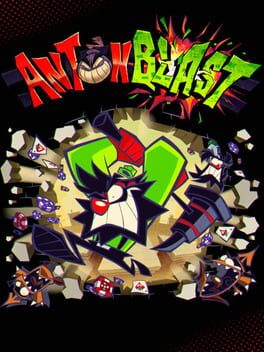
This trivia has been marked as "Not Safe for Work".
It may not be appropriate for all visitors and definitely isn't appropriate for work or school environments.
Click here to unhide it.
It may not be appropriate for all visitors and definitely isn't appropriate for work or school environments.
Click here to unhide it.
▲
3
▼
Dynamite Demo Boiler City:
https://www.youtube.com/watch?v=ySKo0RKgmYI
One Blast Demo Boiler City:
https://www.youtube.com/watch?v=26quTQv1zBM
Antonblast meme parody:
https://www.youtube.com/watch?v=Hv-Kdt0zExA
KnowYourMeme article:
https://www.knowyourmeme.com/memes/this-was-all-because-of-ed-edd-and-eddy
Additional angles of the incident:
https://www.youtube.com/watch?v=biB3KnuJDao
News report about the incident:
https://www.wmar2news.com/news/crime-checker/baltimore-county-crime/suspects-in-stabbing-shooting-at-the-the-avenue-in-white-marsh-still-sought
https://www.youtube.com/watch?v=ySKo0RKgmYI
One Blast Demo Boiler City:
https://www.youtube.com/watch?v=26quTQv1zBM
Antonblast meme parody:
https://www.youtube.com/watch?v=Hv-Kdt0zExA
KnowYourMeme article:
https://www.knowyourmeme.com/memes/this-was-all-because-of-ed-edd-and-eddy
Additional angles of the incident:
https://www.youtube.com/watch?v=biB3KnuJDao
News report about the incident:
https://www.wmar2news.com/news/crime-checker/baltimore-county-crime/suspects-in-stabbing-shooting-at-the-the-avenue-in-white-marsh-still-sought
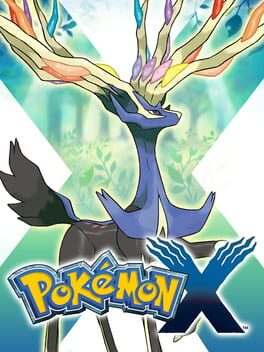
subdirectory_arrow_right Pokémon Y (Game)
▲
1
▼
In May 2013, the fansite PokéBeach published an article containing multiple then-unknown details about Pokémon X and Y after two issues of the Japanese manga magazine CoroCoro Comic confirmed information about the game that had been disclosed to them by their source in February. Upon the game's release, all but one piece of leaked information was confirmed to be true, the exception claiming that the professor's name would be "Patrice", when his named ended up being "Sycamore". In the 2024 Game Freak Teraleak, it would be discovered in a prototype that Patrice was indeed Sycamore's development name.
Centro Leaks tweet:
https://x.com/CentroLeaks/status/1846044871628333223
Prototype footage:
https://x.com/pouaf_/status/1846028868471193607
Original PokéBeach article:
https://www.pokebeach.com/2013/06/pokebeach-x-y-rumor-roundup-and-clarifications
https://x.com/CentroLeaks/status/1846044871628333223
Prototype footage:
https://x.com/pouaf_/status/1846028868471193607
Original PokéBeach article:
https://www.pokebeach.com/2013/06/pokebeach-x-y-rumor-roundup-and-clarifications
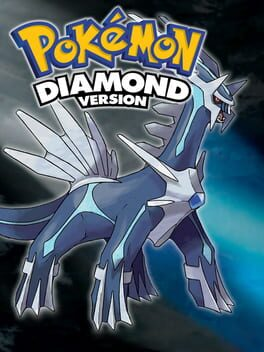
This trivia has been marked as "Not Safe for Work".
It may not be appropriate for all visitors and definitely isn't appropriate for work or school environments.
Click here to unhide it.
It may not be appropriate for all visitors and definitely isn't appropriate for work or school environments.
Click here to unhide it.
▲
1
▼
PC Gamer article:
https://www.pcgamer.com/games/rpg/pokemon-dev-game-freak-appears-to-have-suffered-a-teraleak-that-includes-25-years-of-never-before-seen-pokemon-art-assets-documents-and-even-canceled-movies/
Nintendo Life article:
https://www.nintendolife.com/news/2024/10/pokemon-developer-game-freak-reportedly-hacked-massive-amounts-of-data-allegedly-leaked
My Nintendo News article:
https://mynintendonews.com/2024/10/21/pokemon-mmo-leaked-codenamed-rodeo/
TheGamer article:
https://www.thegamer.com/game-freak-pokemon-leak-humans-pokemon-children-together/
PennLive article:
https://www.pennlive.com/life/2024/10/massive-pokemon-leak-exposes-personal-data-never-before-seen-lore.html
Forbes articles:
https://www.forbes.com/sites/danidiplacido/2024/10/14/pokmon-fans-dont-understand-the-game-freak-leaks/
https://www.forbes.com/sites/paultassi/2024/10/14/pokmons-typhlosion-goes-viral-after-game-freak-leak-for-the-weirdest-possible-reason/
Link to the leaked scrapped Sinnoh myths (in Japanese):
https://pastebin.com/x9Rne5iZ
The Cutting Room Floor article featuring English translations of the myths:
https://tcrf.net/Development:Pok%C3%A9mon_Diamond_and_Pearl/Documents
Veilstone's Myth and other Sinnoh myths:
https://bulbapedia.bulbagarden.net/wiki/Sinnoh_myths#Veilstone's_Myth
https://www.youtube.com/watch?v=ajRq8I6ZkHM#t=426s
Canadian indigenous myth of the Bear Mother:
https://www.historymuseum.ca/cmc/exhibitions/aborig/fp/fpz2f27e.html
https://www.sfu.ca/brc/our-work/imesh-mobile-app/indigenous-art-walk/bear-mother.html
The Dream of the Fisherman's Wife:
https://en.wikipedia.org/wiki/The_Dream_of_the_Fisherman%27s_Wife
https://www.pcgamer.com/games/rpg/pokemon-dev-game-freak-appears-to-have-suffered-a-teraleak-that-includes-25-years-of-never-before-seen-pokemon-art-assets-documents-and-even-canceled-movies/
Nintendo Life article:
https://www.nintendolife.com/news/2024/10/pokemon-developer-game-freak-reportedly-hacked-massive-amounts-of-data-allegedly-leaked
My Nintendo News article:
https://mynintendonews.com/2024/10/21/pokemon-mmo-leaked-codenamed-rodeo/
TheGamer article:
https://www.thegamer.com/game-freak-pokemon-leak-humans-pokemon-children-together/
PennLive article:
https://www.pennlive.com/life/2024/10/massive-pokemon-leak-exposes-personal-data-never-before-seen-lore.html
Forbes articles:
https://www.forbes.com/sites/danidiplacido/2024/10/14/pokmon-fans-dont-understand-the-game-freak-leaks/
https://www.forbes.com/sites/paultassi/2024/10/14/pokmons-typhlosion-goes-viral-after-game-freak-leak-for-the-weirdest-possible-reason/
Link to the leaked scrapped Sinnoh myths (in Japanese):
https://pastebin.com/x9Rne5iZ
The Cutting Room Floor article featuring English translations of the myths:
https://tcrf.net/Development:Pok%C3%A9mon_Diamond_and_Pearl/Documents
Veilstone's Myth and other Sinnoh myths:
https://bulbapedia.bulbagarden.net/wiki/Sinnoh_myths#Veilstone's_Myth
https://www.youtube.com/watch?v=ajRq8I6ZkHM#t=426s
Canadian indigenous myth of the Bear Mother:
https://www.historymuseum.ca/cmc/exhibitions/aborig/fp/fpz2f27e.html
https://www.sfu.ca/brc/our-work/imesh-mobile-app/indigenous-art-walk/bear-mother.html
The Dream of the Fisherman's Wife:
https://en.wikipedia.org/wiki/The_Dream_of_the_Fisherman%27s_Wife
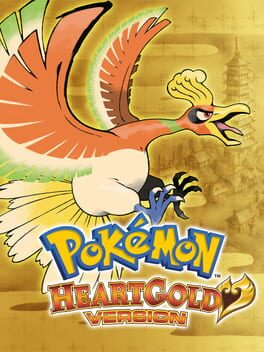
subdirectory_arrow_right Pokémon SoulSilver Version (Game)
▲
1
▼
 During the Sinjoh Ruins event, in which Arceus creates a Lv. 1 Dialga, Palkia, or Giratina, a magic circle appears beneath it during the corresponding cutscene, remaining in place for most of the sequence. The layout of this circle is identical to a chart that Game Freak co-founder and prominent series staffer Junichi Masuda created during the development of Pokémon Diamond and Pearl in 2005, detailing the lineage of numerous Legendary Pokémon from the first four generations. This chart did not become publicly available until it was included in the Teraleak, a large-scale leak of internal server data from Game Freak in 2024.
During the Sinjoh Ruins event, in which Arceus creates a Lv. 1 Dialga, Palkia, or Giratina, a magic circle appears beneath it during the corresponding cutscene, remaining in place for most of the sequence. The layout of this circle is identical to a chart that Game Freak co-founder and prominent series staffer Junichi Masuda created during the development of Pokémon Diamond and Pearl in 2005, detailing the lineage of numerous Legendary Pokémon from the first four generations. This chart did not become publicly available until it was included in the Teraleak, a large-scale leak of internal server data from Game Freak in 2024.
In-game footage of the Sinjoh Ruins cutscene:
https://www.youtube.com/watch?v=hi6WyRP6Cog
Twitter post by Centro Leaks (an account documenting material from the Teraleak) showcasing Masuda's lineage chart:
https://x.com/CentroLeaks/status/1845289910321762652
YouTube video discussing the Teraleak, including coverage of Masuda's lineage chart and the Sinjoh Ruins cutscene:
https://www.youtube.com/watch?v=FQs80F0dDdI
https://www.youtube.com/watch?v=hi6WyRP6Cog
Twitter post by Centro Leaks (an account documenting material from the Teraleak) showcasing Masuda's lineage chart:
https://x.com/CentroLeaks/status/1845289910321762652
YouTube video discussing the Teraleak, including coverage of Masuda's lineage chart and the Sinjoh Ruins cutscene:
https://www.youtube.com/watch?v=FQs80F0dDdI
